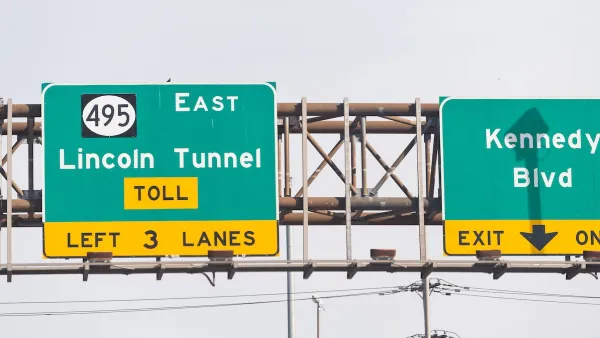In his latest entry in KCET's "Laws That Shaped LA" Series, Jeremy Rosenberg looks at the impact that the Functional Classification system has had on the urban form of Los Angeles and cities throughout the country since its adoption in 1973.
With the help of John Norquist, President and CEO of The Congress for the New Urbanism, who nominated the "Functional Classification Guidelines" for inclusion in Rosenberg's series, the reporter looks at how the "deceptively innocuous-sounding" guidelines helped advance sprawl and destroy urban landscapes by single-mindedly focusing the functionality of streets around accommodating auto movement.
"A successful street, Norquist says, must serve as: a path on which people travel, a place that facilitates the buying and selling of goods and services, and a public gathering spot." However, the Functional Classification system, which was "spelled out in a 1968 Department of Transportation study manual and then adopted into law as part of the Federal-Aid Highway Act of 1973," led public agencies to "focus on -- and fund accordingly -- street projects that put movement first..."
The result? "Sprawl happened. Interstates went right through cities, not around them. Significantly wider surface streets were constructed. Historic and other older buildings were sacrificed for more asphalt lanes. Urban cores split and sputtered. Commerce stalled. Tax receipts declined. People's daily lives intersected less. Suburban big box retail replaced mixed-use Main Streets. Life in less sustainable suburbia started to make sense. Populations fled."
So what is the antidote to movement? Congestion, as Norquist argued in a recent op-ed for Planetizen. "[E]ven at its worst, moving slower on a narrower road through a happening and engaged city far outweighs the alternative that the Functional Classification has for so long promoted."
FULL STORY: Sprawl: What Happens When You Legislate Against Vibrant Streets

Analysis: Cybertruck Fatality Rate Far Exceeds That of Ford Pinto
The Tesla Cybertruck was recalled seven times last year.

National Parks Layoffs Will Cause Communities to Lose Billions
Thousands of essential park workers were laid off this week, just before the busy spring break season.

Retro-silient?: America’s First “Eco-burb,” The Woodlands Turns 50
A master-planned community north of Houston offers lessons on green infrastructure and resilient design, but falls short of its founder’s lofty affordability and walkability goals.

Test News Post 1
This is a summary

Analysis: Cybertruck Fatality Rate Far Exceeds That of Ford Pinto
The Tesla Cybertruck was recalled seven times last year.

Test News Headline 46
Test for the image on the front page.
Urban Design for Planners 1: Software Tools
This six-course series explores essential urban design concepts using open source software and equips planners with the tools they need to participate fully in the urban design process.
Planning for Universal Design
Learn the tools for implementing Universal Design in planning regulations.
EMC Planning Group, Inc.
Planetizen
Planetizen
Mpact (formerly Rail~Volution)
Great Falls Development Authority, Inc.
HUDs Office of Policy Development and Research
NYU Wagner Graduate School of Public Service



























